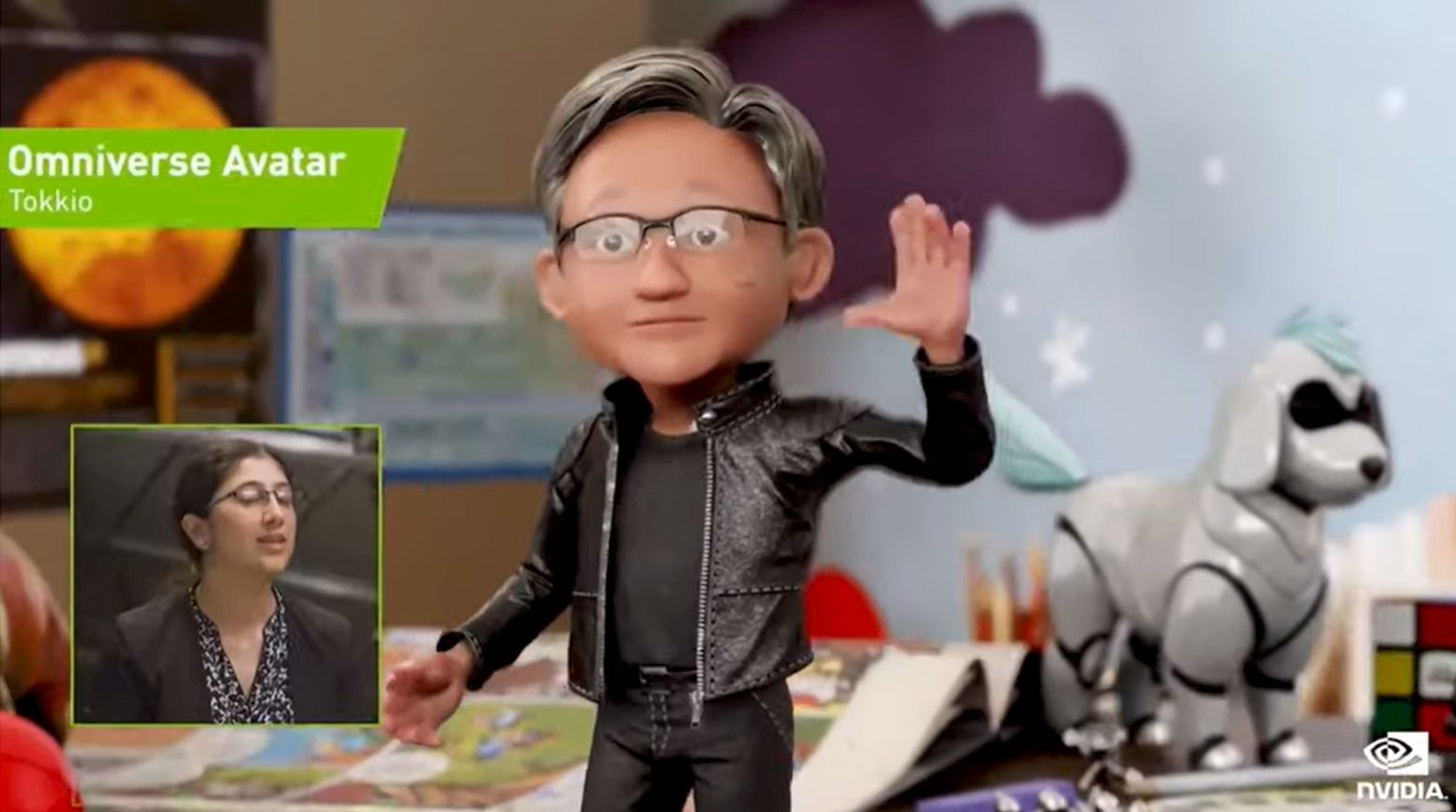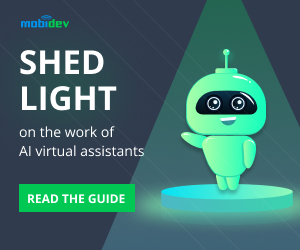By Oleksii Tsymbal
As the changes to the landscape of the market accelerate at a breakneck pace, businesses continue to embrace new technologies like AI Avatars to drive conversions and customer engagement. Such giants as Samsung, Facebook, Nvidia and Microsoft have already begun creating their own digital humans powered with artificial intelligence.
Let’s find out what AI avatars are, why the largest market players show such interest in this and what businesses can benefit from this high-end solution.
Understanding What AI Avatars Are
AI avatars are 3D models powered by artificial intelligence that look like real humans and can interact with users in a human-like manner. Sounds fantastic? Technology has made this a reality. Thanks to artificial intelligence, AI avatars can maintain eye-contact with the users, answer questions and respond to the expressions of the conversationalist. Basically, AI avatars can be considered one of the types of chatbots, but more advanced in terms of interaction.
Digital avatars, also called digital humans, learn through the algorithms programmed by its developers as well as through its experience with users, which allows them to improve. Sometimes, they are also stylized to look like cartoon characters or 2D art, such as Samsung’s AR Emoji or Apple’s Memoji.
AI in eCommerce and ai shopping assistant are booming, and one of the reasons for the rapid adoption of AI Avatars is recent research showing that people prefer seeing a human face when interacting with a company or making a purchase. Because more sales take place online than at retail locations, AI Avatars give transactions a human touch that a website or app cannot.
One of the key players in the AI Avatars industry is London-based Synthesia, founded in 2017 by researchers and venture capitalists from UCL, Stanford, TUM, and Cambridge. Kleiner Perkins and GV (Formerly Google Ventures) staked a $50 million investment on Synthesia’s AI Avatar technology, allowing customers to generate fully voiced photorealistic avatars with a simple text prompt. These avatars can be used to create business videos with Synthesia for training, advertising or other purposes.
![]()
Graphics card giant Nvidia recently announced their foray into the AI Avatars market with Omniverse Avatar. The Omniverse Avatar project includes photorealistic avatars like Project Maxine and 3D cartoon avatars like ToyMe.
The ToyMe avatars debuted in a virtual assistant demo where the AI avatar answered real-time astronomy questions from experts in the field. Nvidia avatars are based on speech AI, computer vision, natural language understanding, recommendation engines and simulation technologies.

The Technology Behind AI Avatars
Previous approaches to 3D AI Avatars involved a lot of render time and resources, such as those seen in Hollywood movies over the past few decades. Unlike some pre-rendered virtual avatars seen in movies like Planet of the Apes (2001) and Avatar (2009), modern AI Avatars utilize Machine Learning algorithms to render photorealistic avatars on the fly.
Machine Learning models take a data-driven approach and utilize massive sets of data to learn from experience in a way that mimics how humans learn and adapt. Applying these techniques to rendering 3D Avatars makes true-to-life images possible as the algorithm scrubs through thousands of hours of video, learning to generate and animate a human face.
This technology has massive implications for the growing number of Virtual Reality (VR) and Augmented Reality (AR) products, where photorealism is key to providing groundbreaking experiences. Next-generation game engines like Unreal Engine 5 integrate brand-new technologies like Unreal’s Nanite Virtualized Geometry system, designed to create more realistic and performant experiences for Virtual Reality games.
AI avatars are based on a complex set of technologies to achieve a maximum resemblance to human behavior. This set includes the following:
| Technology | Application in AI avatars |
| AI and Machine learning | Enable advanced rendering, detecting human emotions and self-improvement of avatars based on previous experience. |
| Natural language processing (NLP) | Allows avatars to process and understand voice commands. |
| Natural language generation (NLG) | It helps AI avatars respond with voice using text-to-speech capabilities.
|
| Advanced 3D modeling | Used for visualization, animation of AI avatars and accurately reproducing human expressions and generating facial movements. |
Let’s take a look at the technology behind the AI Avatar’s verbal or written responses. Older text-to-speech products often relied upon a database full of pre-recorded words or syllables from a human voice actor for speech synthesis. Modern Machine Learning projects can generate a fully synthetic voice.
For example, Google’s DeepMind utilizes WaveNet, their proprietary generative model for raw audio. Google and their customers use WaveNet for voice synthesis in many different projects. Just as with still images and videos generated with Machine Learning, ML voices learn by studying thousands of hours of spoken word to create realistic voices.
Not sure if AI avatars are right for your business model? Check out other types of AI virtual assistants and find out how they work under the hood by reading the AI Assistant Technology Guide.
Where AI Avatars are Used
Companies utilize AI avatars in a variety of different applications. They are widely used in marketing and eCommerce as AI assistants. For instance, Samsung’s next-generation personal assistant, NEON AI, renders a photorealistic avatar that helps answer questions and entertain customers like a higher-tech version of Apple’s Siri. According to the creators, in the near future it will be possible to subscribe to NEON as a service representative, financial advisor, health care provider or concierge.
![]()
IPSoft’s Amelia AI Avatar was deployed in-field for a British multinational hotel group. The AI had an impressive 90% accuracy rate on answering hotel customer queries. While the Amelia AI Avatar presently handles 32% of the total customer service workload, her capabilities rapidly improve with time.
![]()
Unreal Engine includes advanced proprietary technology for AI Avatars in their system for game developers. While this particular deployment of AI is not focused on customer service, the technology allows developers to structure the game AI’s decision trees and behaviors to give players a more realistic and challenging experience in competitive play.
AI Avatars with realistic conversation intelligence can be the difference between a successful sale and an unhappy customer. Older chatbots relied upon Markov Chains and other programming tricks that have since been outmoded by more advanced Machine Learning-powered techniques. Conversational AI searches for context and nuanced information in customer queries and provides an answer that is more specific to their needs.
For customers who are uncertain whether or not a particular product is right for them, 3D Avatars can also be used as references for the relative size of a product like a table or a mattress. We already know enough use cases for machine learning to provide eCommerce customers with a virtual product experience, but AI avatars go further. Customers upload a full-body photo of themselves and the AI scans the photo for the height and weight of the customer, intelligently sensing their relative size compared to the product. Giving a customer the ability to preview a product’s size vastly reduces costly returns.
AI Avatars and the Metaverse
Meta (Formerly Facebook Inc.) made waves by announcing their plans to build the Metaverse, a virtual world first conceived by author Neal Stephenson in his cyberpunk novel, Snow Crash. Though controversy follows Meta’s CEO Mark Zuckerberg for his company’s usage policies of customer data, many companies are already on-board with the Metaverse.

One of Meta’s competitors, Microsoft Inc., announced the integration of 3D Avatars and VR space into their Microsoft Teams product, allowing businesses to meet in a virtual reality conference setting. Microsoft has plans to create their own competitive Metaverse virtual reality setting, which industry pundits say is only the beginning of the battle for supremacy in the virtual reality space.
Since the Metaverse is a 3D virtual world where users interact by using their avatars, AI Avatars as an industry will grow in concert with the success (or lack thereof) of the Metaverse as a concept. That is to say, the more users that sign into the Metaverse, the more avatars there will be. Consumers naturally like to express themselves and cultivate a unique online personality, so having a wide variety of different avatars available will be very important to users. It is safe to assume that if the Metaverse takes off, so will AI Avatars. Businesses will also be able to use their own AI Avatars to attract new customers and sell their products and services.



































